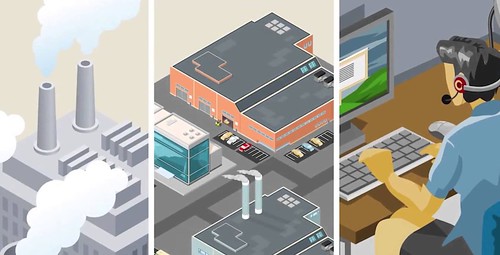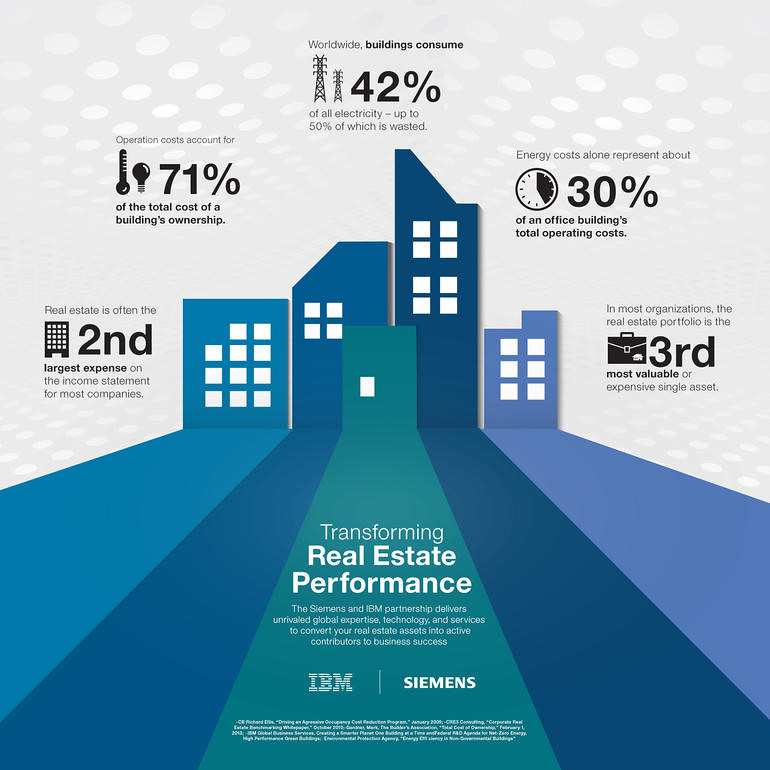How IBM Watson is Driving the Trend of ‘Intelligent Buildings’
 The Internet of Things has delivered to us the advent of the smart home, and now its rapidly emerging sibling, the smart building.
The Internet of Things has delivered to us the advent of the smart home, and now its rapidly emerging sibling, the smart building.
These so-called “intelligent” or “connected” buildings use modern technology to reach new levels of efficiency and the results are dramatic.
Worldwide, buildings consume more than 40% of all electricity, and up to half that electricity is wasted. Energy costs represent up to one-third of a building’s total operating costs, which account for nearly three-quarter’s of a building’s total cost of ownership. Among any given company’s most expensive—and valuable—assets, one can see the need for optimization.
At IBM InterConnect 2016, Siemens Building Technologies Division and IBM announced cloud-based solutions that will leverage Siemens’ building expertise and IBM’s Internet of Things capabilities to maximize the potential of connected buildings and the data they create, helping corporate real estate owners across multiple industries drive business results and meet energy efficiency goals.
Siemens is integrating software from IBM’s Watson IoT Business Unit into its cloud-based Navigator energy and sustainability management platform. Now, predictive analytics can be applied for fault detection and diagnosis so potential issues can be addressed before anything happens and text recognition and analytics for utility invoice validation can identify billing errors and enhance data quality.
“By interfacing our Navigator platform with IBM’s software, we can bring Siemens’ proven expertise in energy optimization and building performance together with IBM’s real estate and asset management systems to create an unrivaled combination that will dramatically improve the productivity of buildings,” says Matthias Rebellius, CEO, Siemens Building Technologies Division.
“Connected ‘things’—everything from hospital beds, train tracks, cars, buildings and more—are generating massive amounts of data that can be analyzed to provide quick, actionable insights,” said Harriet Green, General Manager, Watson IoT, Education & Commerce, IBM.
This sort of energy efficiency technology is especially important in climates such as BC, where a lack of sun makes solar powered buildings fiscally infeasible.

The corporate real estate industry is just beginning to scratch the surface of advanced data analytics for the purpose of producing consistent results and enabling easier decision-making, says IBM, who also announced a partnership with KONE. Through the arrangement, KONE will tap into the IBM Watson IoT Cloud Platform to connect, monitor and optimize its management of millions of elevators, escalators, doors and turnstiles in buildings and cities worldwide.
“We operate in a connected world and by working with IBM, new solutions like remote diagnostics and predictability means we will deliver even better services to our customers, and great experiences for the people who use our equipment,” says Henrik Ehrnrooth, President & CEO of KONE Corporation.
Using IBM’s open standards-based Watson IoT Cloud platform, KONE says it plans to allow a developer ecosystem via Application Programming Interfaces to build new applications to make a smoother, safer and more personalized “people flow experience” for building users.
“Efficient, people-centric cities and buildings are better for business, societies and economies. Central to this is how people move around within them and intelligent systems are poised to make their experience more convenient, intuitive and enjoyable,” said Green.
Infographic: IBM




